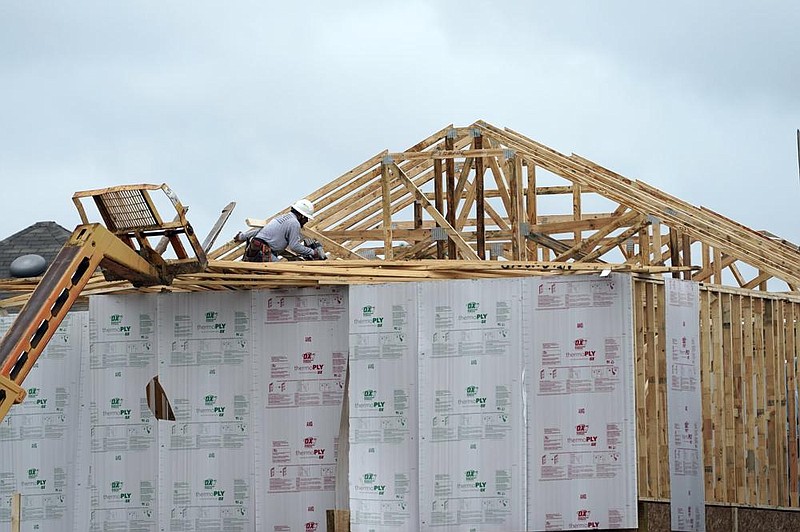U.S. home construction starts rose for a fourth-straight month in December to the best pace since late 2006 as builders responded to the robust demand for single-family housing.
Construction jumped 5.8% to 1.67 million units, a 14-year high that also topped the strongest annual showing from the country's builders since the mid-2000s.
The better-than-expected December gain followed an increase of 9.8% in November when housing starts climbed to a seasonally adjusted annual rate of 1.58 million units, the Commerce Department reported Thursday. The December pace was the strongest since the monthly building rate reached 1.72 million units in September 2006.
For all of 2020, construction began on 1.45 million units, up 4.8% from 2019 and the best pace since construction starts totaled 1.8 million units in 2006. That period included a huge U.S. housing boom that eventually burst, kicking off the catastrophic 2007-2009 recession.
[CORONAVIRUS: Click here for our complete coverage » arkansasonline.com/coronavirus]
Meanwhile applications to build, a proxy for future construction, increased 4.5% in December to a 1.71 million annualized rate that was also the best since 2006.
Housing has been one of the star performers this year even as the overall economy has been wracked by the spread of the coronavirus.
The Federal Reserve's ultra-easy monetary policy has helped push mortgage rates to record lows that are attracting more potential homebuyers and underpinning historically strong demand.
Also fueling demand is the migration of Americans to larger homes better suited for home offices during the pandemic.
"We expect the pace of housing starts to moderate in 2021 as homebuilders confront constraints, including high lumber prices and shortages of lots and labor," said Nancy Vanden Houten, lead U.S. economist at Oxford Economics.
Even with these constraints, Vanden Houten believes home construction should remain at healthy levels, supported by low mortgage rates and strong demand when covid-19 cases begin to decline.
For December, construction of single-family homes increased by 7.8% to 1.23 million units. Construction of apartments with five or more units fell by 2% to a rate of 437,000.
The Northeast was the only region in the country that fell, suffering a decline of 7.2%. Construction rose 13.6% in the Midwest, 11.2% in the West and 1.3% in the South.
U.S. long-term mortgage rates slipped this week while remaining at record-low levels.
Mortgage buyer Freddie Mac -- the Federal Home Loan Mortgage Corp. -- reported Thursday that the average rate on the benchmark 30-year fixed-rate home loan eased to 2.77% from 2.79% last week. By contrast, the rate stood at 3.60% a year ago.
The average rate on 15-year fixed-rate loans, popular among homeowners seeking to refinance their mortgages, declined to 2.21% from 2.23%.
The damage from the coronavirus pandemic on the U.S. and global economies suppressed home loan rates through most of last year.
Long-term bond yields, which can influence interest rates on mortgages and other consumer loans, have climbed recently amid expectations of higher U.S. government spending on pandemic relief and an economic recovery as more people get vaccinated for covid-19.
Economists forecast modest increases in mortgage rates this year. But they likely will remain relatively low as the Federal Reserve keeps interest rates near zero as needed until the economy recovers, Freddie Mac chief economist Sam Khater said Thursday.
While housing has been strong, the labor market has struggled to recover. A separate government report showed Thursday that initial filings for state unemployment benefits fell only slightly last week and remained elevated at 900,000 in the week that ended Saturday.
Information for this article was contributed by Martin Crutsinger of The Associated Press and by Reade Pickert of Bloomberg News (TNS).
